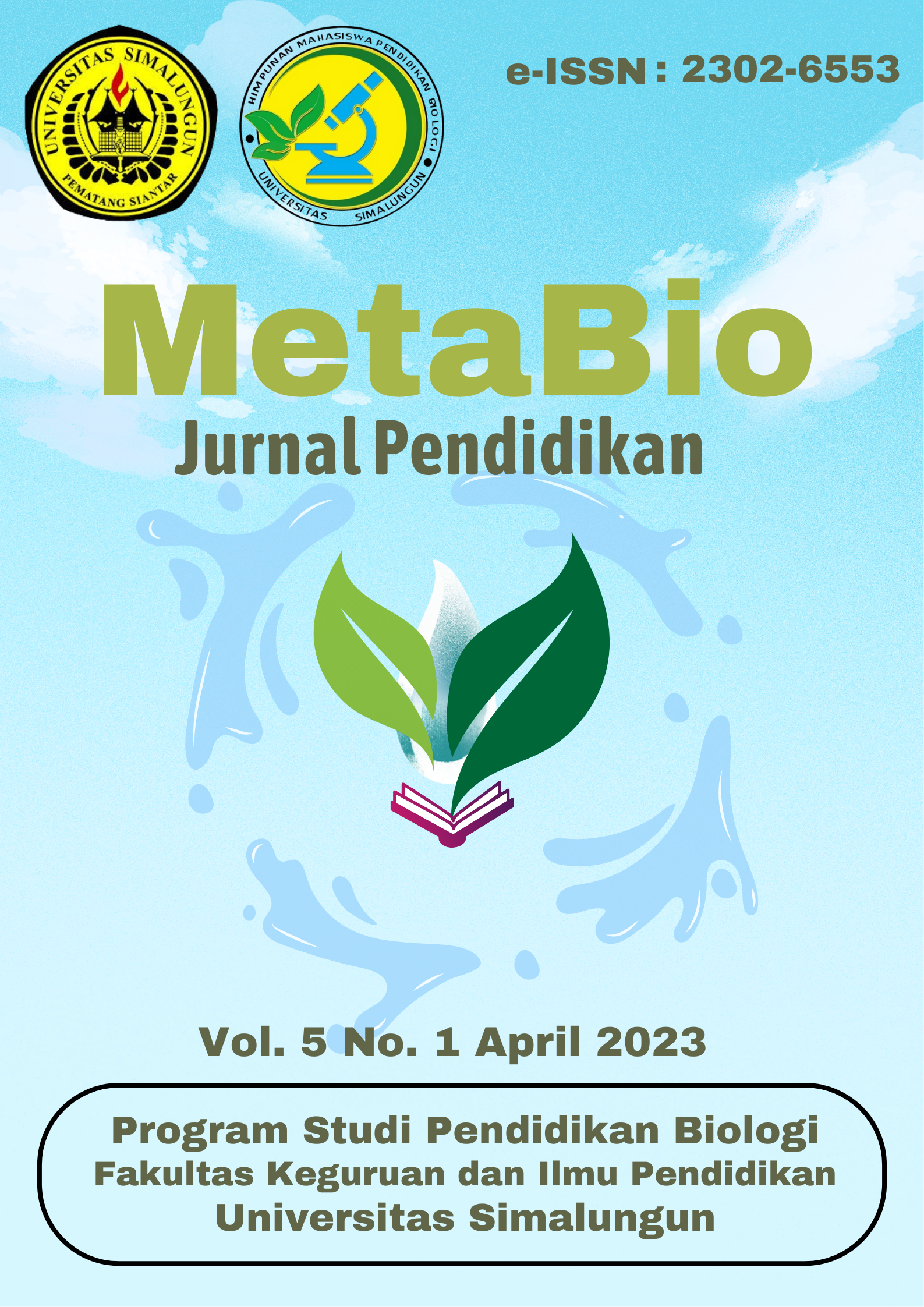PERBANDINGAN HASIL BELAJAR SISWA MENGGUNAKAN MEDIA PEMBELAJARAN KAHOOT DAN QUIZIZZ BERBASIS PROBLEM BASED LEARNING (PBL) PADA MATERI ANIMALIA
DOI:
https://doi.org/10.36985/59bj6g27Keywords:
: Perbandingan, Kahoot, Quizizz, Hasil Belajar SiswaAbstract
This study aims to determine the differences in student learning outcomes and the magnitude of the differences in student learning outcomes using Kahoot and Quizizz learning media on Animalia material in grade X of SMA Kartika I-4 Pematangsiantar in the 2022/2023 academic year. The population was 181 students consisting of 4 classes, and the sample was taken using Cluster Random Sampling to obtain two classes. Experimental class 1 (X-MIA 3) consisted of 45 students and experimental class 2 (X-MIA 4) consisted of 44 students. Experimental class 1 was treated using the Problem-Based Learning learning model on Animalia material. After that, they were given a final test or post-test using Kahoot, and experimental class 2 was treated using the Problem-Based Learning learning model on Animalia material. After that, they were given a final test or post-test using Quizizz. Data analysis was carried out by finding the mean (X̅ ), standard deviation (S), and hypothesis testing (t-test) at a significance level of α = 0.05. The research results showed that the average pre-test score for experimental class 1 (X-MIA 3) was 29.78 and for experimental class 2 (X-MIA 4) was 32.39. The average post-test score for experimental class 1 (X-MIA 3) was 79.11 and for experimental class 2 (X-MIA 4) was 78.98, with a difference of 0.13. The hypothesis test using the t-test obtained t-count (0.178) < t-table (1.66256). It can be concluded that there is no difference in student learning outcomes using Kahoot and Quizizz based problem-based learning media on Animalia material for grade X students at SMA Kartika I-4 Pematangsiantar in the 2022/2023 academic year.
Downloads
Downloads
Published
Issue
Section
License
Copyright (c) 2023 Metabio: Jurnal Pendidikan Biologi

This work is licensed under a Creative Commons Attribution 4.0 International License.


